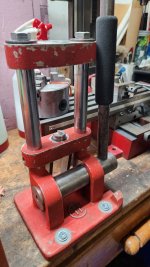Tinkering between these two, but not both, if I can figure around:
- to get a reloading arbour press from K&M or 21st Century?
or
- get a pressure/load cell with display from ali and I can use my micro mill as arbour press?
My focus is on getting consistency as much possible.
Anybody can chime in with - load pressure sensors/cells experience and tips?
- to get a reloading arbour press from K&M or 21st Century?
or
- get a pressure/load cell with display from ali and I can use my micro mill as arbour press?
My focus is on getting consistency as much possible.
Anybody can chime in with - load pressure sensors/cells experience and tips?







































































